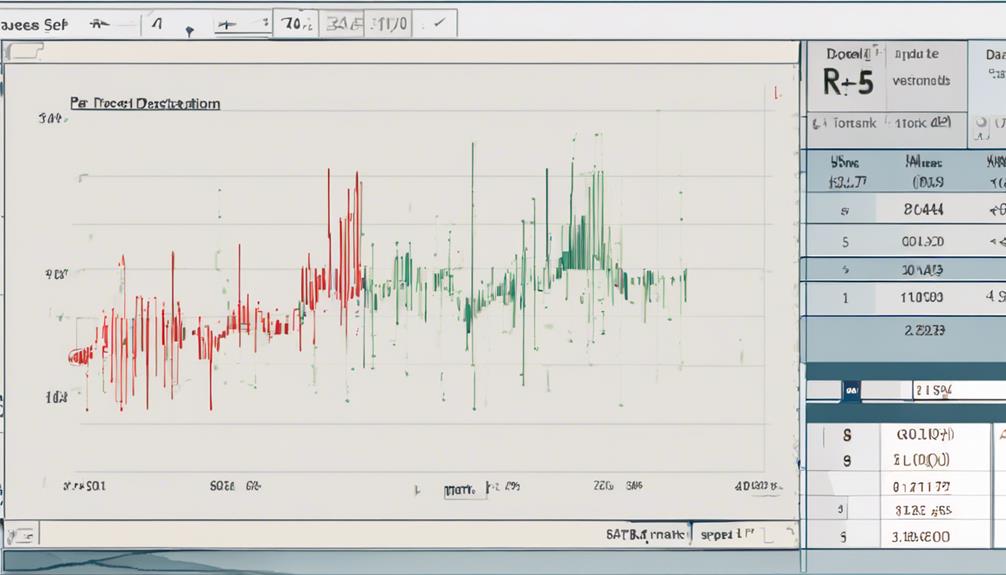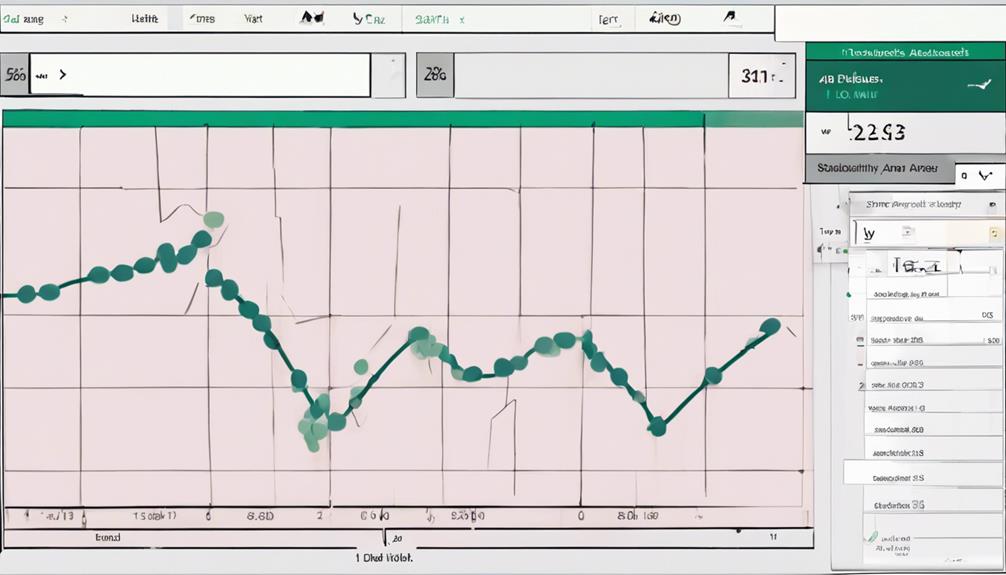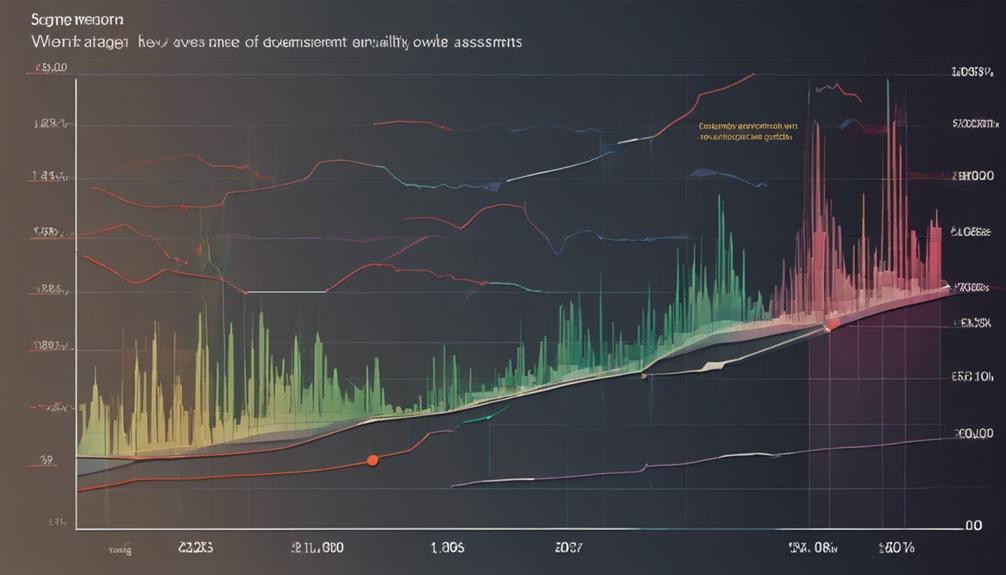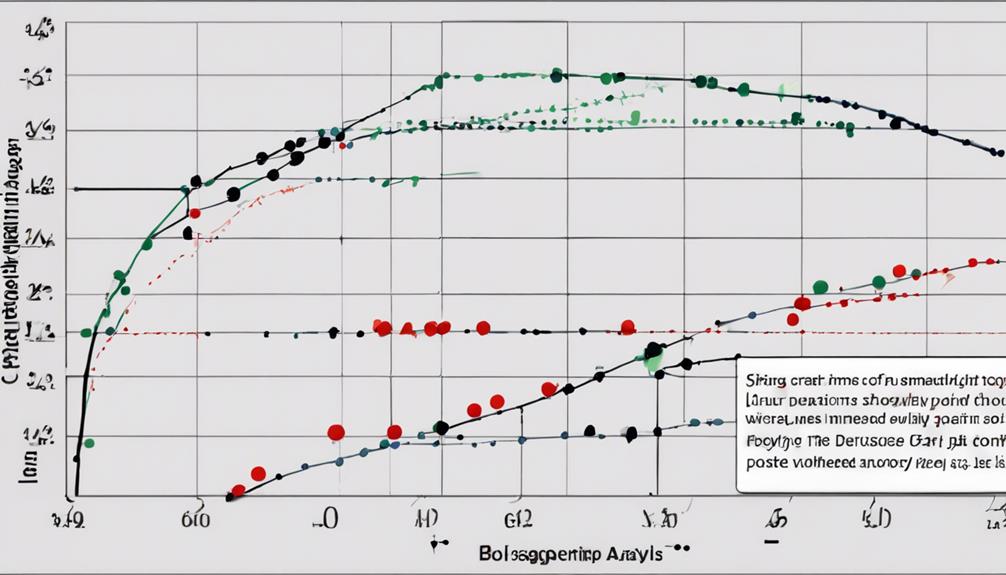Standard deviation serves as a fundamental metric in volatility analysis, offering a quantitative assessment of the degree of dispersion within a dataset. Its significance extends beyond mere numerical calculations, as it forms the backbone of risk evaluation in various sectors, particularly finance.
By delving into the role of standard deviation in volatility analysis, we uncover a nuanced understanding of how this statistical measure influences decision-making processes, risk management strategies, and ultimately, the overall performance of investments. The intricate relationship between standard deviation and volatility unveils a realm of insights that are pivotal for informed decision-making, making it an indispensable tool in the realm of financial analysis.
Importance of Standard Deviation in Volatility
The significance of standard deviation in volatility analysis lies in its ability to provide a quantitative measure of the dispersion of returns from the mean, offering a clear indicator of the level of price fluctuations within a given asset or market.
Standard deviation plays a crucial role in assessing the risk and potential reward associated with an investment by showcasing how much prices deviate from the average. Investors leverage standard deviation to evaluate the stability and predictability of an asset's price movements over time.
High standard deviation indicates higher volatility and risk, while low standard deviation suggests lower volatility and potentially more stable returns. Understanding standard deviation is essential as it helps in gauging the level of uncertainty and risk in the market, thereby guiding investment decisions.
Calculating Standard Deviation for Analysis

In the realm of financial analysis, the calculation of standard deviation serves as a fundamental tool for assessing the variability and dispersion of returns, playing a pivotal role in evaluating the level of risk associated with investments. Standard deviation is computed by first finding the mean return, then squaring the deviations from this mean, averaging these squared deviations, and finally taking the square root to determine the standard deviation.
This process quantifies how individual data points deviate from the average return, providing insights into the volatility and dispersion of returns. By quantifying the level of consistency or inconsistency in returns, standard deviation allows for comparisons of volatility across different portfolios or assets.
Understanding and calculating standard deviation are essential for analyzing risk, making informed investment decisions, and effectively managing portfolio volatility. This analytical approach to standard deviation empowers investors to make data-driven decisions regarding their investments, enhancing the potential for favorable outcomes.
Interpreting Standard Deviation in Volatility

Assessing market volatility through the interpretation of standard deviation plays a crucial role in risk analysis and investment decision-making. Standard deviation in volatility analysis measures the dispersion of returns around the mean, reflecting the extent of price fluctuation within a specific timeframe. High standard deviation signifies a higher level of price variability and associated risk in the investment, while low standard deviation indicates greater stability and lower risk.
By understanding standard deviation, investors can gauge the potential range of returns and evaluate the level of uncertainty or risk linked to an investment. It is an essential tool for evaluating the historical volatility of assets or portfolios, aiding in risk management decisions. Interpreting standard deviation in volatility analysis allows for assessing the level of price unpredictability and its potential impact on investment performance.
Therefore, mastering the interpretation of standard deviation is key to making informed investment choices and effectively managing risk in financial markets.
Utilizing Standard Deviation for Risk Management

Utilizing Standard Deviation for Risk Management enables investors to quantify and manage the variability of returns in their portfolios, facilitating informed decision-making based on the level of volatility present. Standard Deviation serves as a valuable metric in risk management by providing a clear understanding of the spread of returns within a portfolio. By calculating Standard Deviation, investors can effectively assess the level of risk associated with their investments, especially in fluctuating market conditions. This measurement of variability around the average return is crucial for comprehending and managing portfolio volatility effectively.
In the realm of risk management, Standard Deviation plays a pivotal role in helping investors evaluate the consistency and stability of their investments. It allows for a more accurate assessment of how market fluctuations may impact the portfolio's performance. Utilizing Standard Deviation empowers investors to optimize their risk-return trade-offs, ensuring that the portfolio aligns with their risk tolerance levels and investment objectives. By incorporating Standard Deviation into their risk management strategies, investors can make well-informed decisions that enhance the overall stability and resilience of their portfolios.
Standard Deviation: Key Tool in Volatility

Standard Deviation serves as a fundamental metric for evaluating volatility in investment analysis, providing insight into the dispersion of data points from the mean and aiding in risk assessment strategies.
Here are five key points highlighting the importance of standard deviation in volatility analysis:
- Standard deviation measures the dispersion of data points from the mean, offering a quantitative assessment of volatility and risk.
- It helps quantify the level of uncertainty in an investment by showcasing how much prices deviate from the average.
- Investors rely on standard deviation to comprehend potential price fluctuations in an asset, facilitating effective risk management strategies.
- A higher standard deviation signifies increased volatility and risk, whereas a lower standard deviation indicates lower volatility and risk.
- Calculating standard deviation enables comparisons of volatility between different assets or portfolios, supporting informed decision-making in investment analysis and portfolio management.
How Does Standard Deviation Help in Analyzing Stock Volatility?
Standard deviation is one of the most important methods to analyze stock volatility. It measures the extent of a stock’s price fluctuation. A higher standard deviation indicates greater volatility, while a lower one suggests a more stable stock. This helps investors assess the risk associated with a particular stock.
How Does Standard Deviation Play a Role in Volatility Analysis for Risk Assessment?
Standard deviation is a key component of effective risk analysis methods in assessing volatility. By calculating the variability of data points from the mean, standard deviation provides a measure of how much securities fluctuate. This allows investors to gauge potential risks and make informed decisions when managing their investments.
Frequently Asked Questions
Why Is Standard Deviation a Good Measure of Volatility?
Standard deviation serves as a reliable measure of volatility due to its ability to quantify the degree of variation in a dataset. It provides valuable insights into the level of risk present, aiding in informed decision-making within financial investments.
What Is the Importance of Standard Deviation in an Analysis?
Standard deviation is pivotal in analysis for its ability to quantify data dispersion. It provides insights into the variability of values, aiding in risk assessment and decision-making. This essential metric enhances understanding and comparison within datasets.
Why Is It Important to Know the Standard Deviation of a Stock?
Understanding the standard deviation of a stock is crucial as it provides valuable insights into price volatility and risk levels. This knowledge empowers investors to make informed decisions aligned with their risk tolerance and investment objectives.
Why Is Standard Deviation the Most Useful?
Standard deviation is the most useful metric for assessing volatility as it provides a precise measure of the variability of returns around the mean. It quantifies risk, aiding investors in understanding potential fluctuations in investments.
Conclusion
In conclusion, standard deviation serves as a crucial tool in volatility analysis, allowing investors to assess risk and make informed decisions. By calculating standard deviation, investors can better understand the variability of data points and manage market fluctuations effectively.
Ironically, despite its importance, standard deviation is often overlooked or underestimated by some investors, leading to potential risks and missed opportunities in portfolio management.
